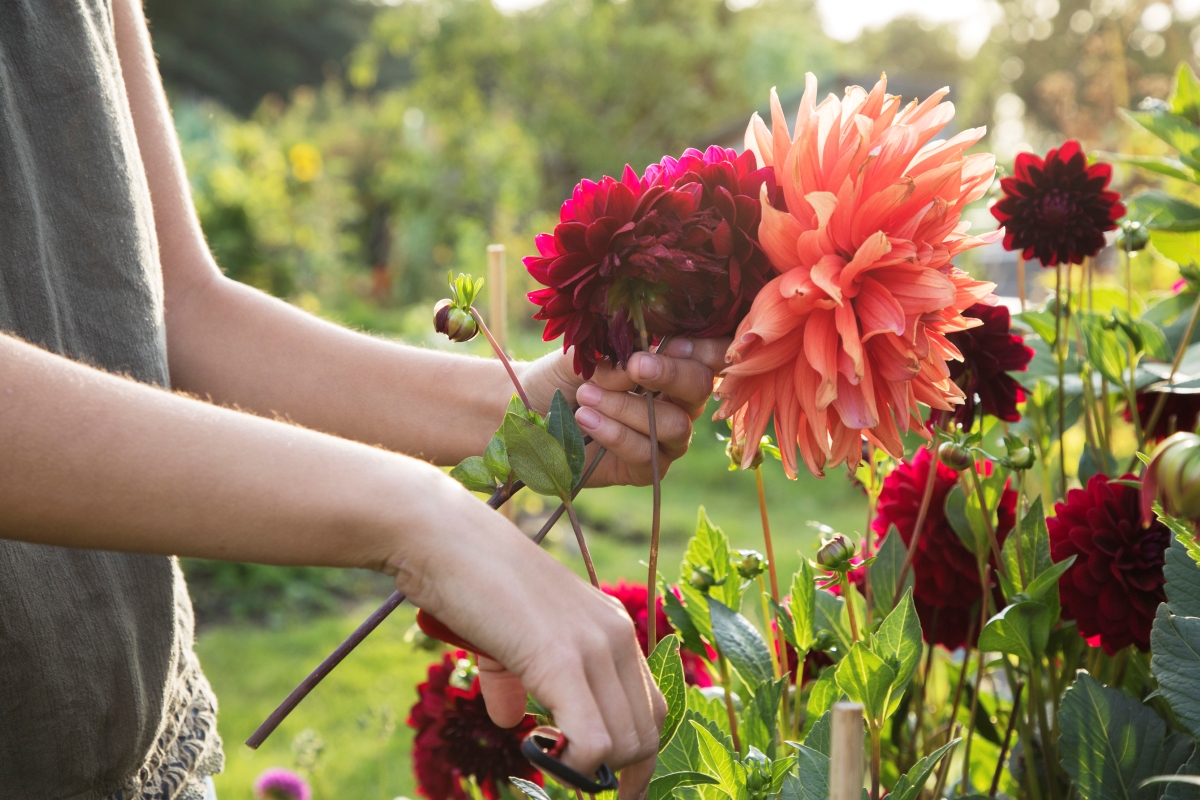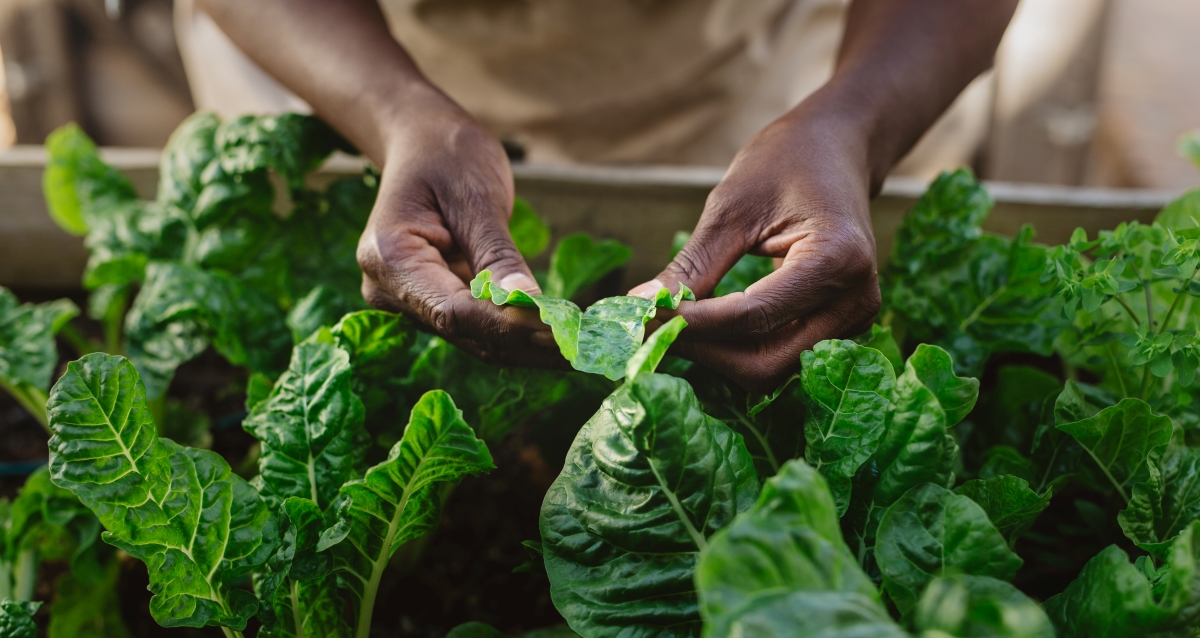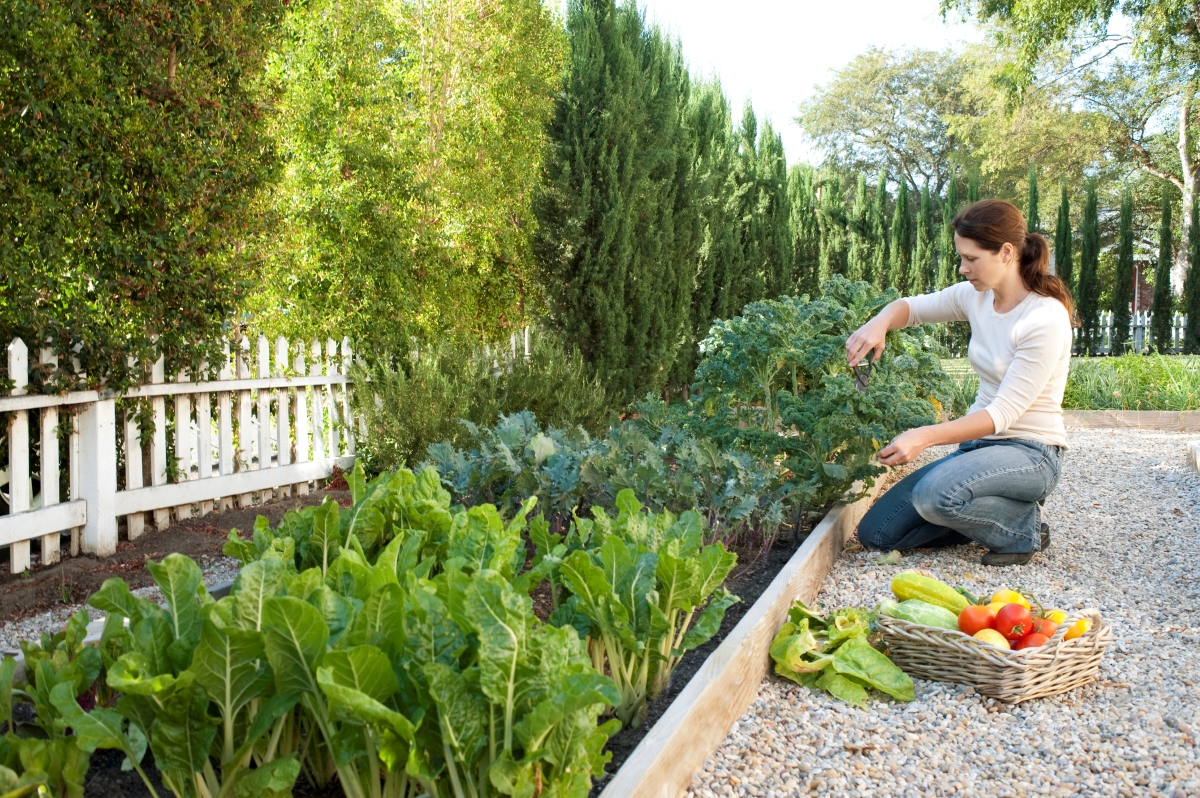We may earn revenue from the products available on this page and participate in affiliate programs. Learn More ›
A cut and come again garden incorporates the practice of continuous harvest as an economical and efficient method of gardening. As opposed to conventional or commercial farming in which (typically) a crop is harvested all at once, this method is better suited to small (particularly urban) gardens intended to feed individual families.
Sustained harvest supplies a continuous yield throughout the growing season without the need to replant. This extends the season by allowing gardeners to pick what they want at various times for the freshest produce and leave the rest of the plant to continue growing for later additional harvests.
Benefits of a Cut and Come Again Garden

Cut-flower gardens have been around a long time. Being able to harvest fresh flowers and produce throughout an extended growing season seems like a good enough reason to grow a cut and come again garden, but there are additional benefits of this gardening method.
Reduces Waste
“This method will reduce wastage because it allows one to harvest according to needs,” says Samuel Davis, horticulturist and CEO of London Gardeners. Instead of one large harvest producing more flowers or vegetables than needed at a single time, cut and come again gardens produce continuously over the course of the growing season.
“With a cut and come again approach to harvesting, you can just take what you need and minimize food waste while maximizing all that your garden is capable of producing,” says Nathan Thorne, horticulturist and CEO at Handyflowers.
Saves Money, Time, and Space
Eliminating the need to reseed or replant saves money on new seeds or seedlings, and shortens the time until harvest because the plant is already established.
Gardeners also save space by getting maximum yield from a small area with the use of cut and come again methods. “Since you keep harvesting from the same plant over and over again,” Thorne explains, fewer plants can provide plentiful supply over time.
Slows bolting
Cool-weather crops, such as lettuce, spinach, broccoli, kale, some herbs, and even some flowers such as pansies and violas tend to bolt in hot weather—going to seed by putting out flower stems before harvest. Plants that bolt typically develop a bitter taste. Harvesting regularly can postpone bolting. Furthermore, taking the outer leaves of leafy plants like lettuce and spinach prevents them from maturing, ensuring continued vigorous growth.
Promotes Plant Health and Growth
Many plants will be more productive, not to mention healthier and more robust, from constant harvesting. Thorne says the “intentional process of making plants grow” through continuous harvest will “prompt the plants to develop newer growth, which leads to a higher level of productivity and more robustness in structure.”
This process may also reduce attacks from diseases and pests through the periodic removal of old leaves that could be infected.
How to Harvest Outer Leaves

Harvesting the outer leaves of leafy vegetables encourages healthy regrowth. Use sharp scissors or shears to cut the more mature, larger leaves at the base. “This is because they are normally ready for harvest, thereby giving the inner younger ones a chance to grow,” Thorne explains. “Snip off as many of the mature, lower leaves as you need, while leaving some younger inner leaves behind. This allows the plant to keep growing new leafy growth,” he says.
Trim the leaves near the base of the plant, being careful not to damage the growing crown so the plant can focus its energy on new growth instead of healing cuts made too high on the stem.
How to Harvest New Shoots

Harvesting new shoots, especially from leafy greens, herbs, or brassicas, is easy. “Simply nip or cut off new shoots when they are about 2 to 4 inches in length,” Davis says. This can be done with garden shears or your fingers. Pinch off new growth just above a set of leaves or a leaf node. Be sure to leave some of the leaves so that photosynthesis can continue and the plant will be encouraged to grow more shoots and leaves for future harvesting.
Be selective. Avoid taking too much from one area of a plant for optimal plant health and continued growth.
Additional Tips for Cut and Come Again Harvesting
Proper cut and come again techniques can promote new growth through selective regular harvesting.
- Harvest no more than one-third of the foliage from a plant at any one time so that it can stay healthy and remain prolific, Thorne advises.
- Know when to stop. Some veggies develop a bitter taste after several harvests; others may bolt, and a few simply don’t recover well, with minimal growth.
- Harvest in the morning, when plants are at their freshest and most well watered.
- Always use clean, sharp tools to minimize damaging the plant.
- Don’t try this method on root plants. Harvesting destroys them.
- Hydrate after harvesting: Dip the harvested leaves or shoots in a bowl of cool water to refresh them until you intend to use them.


